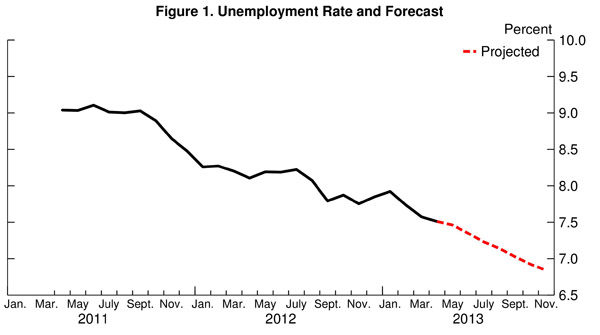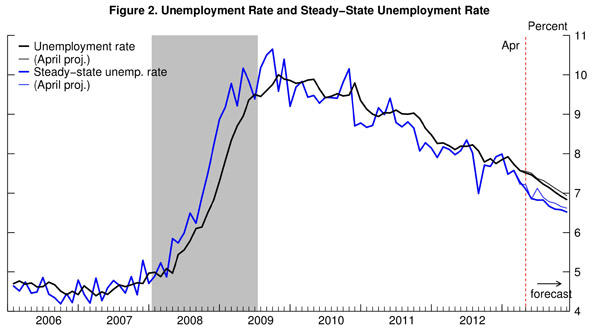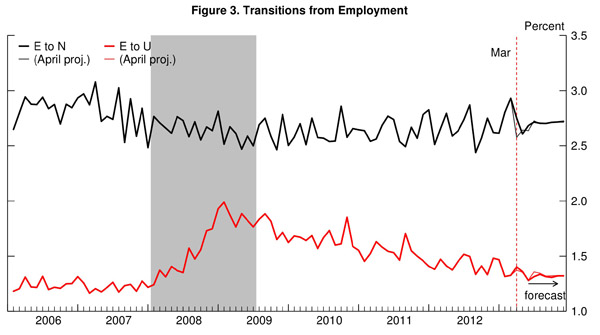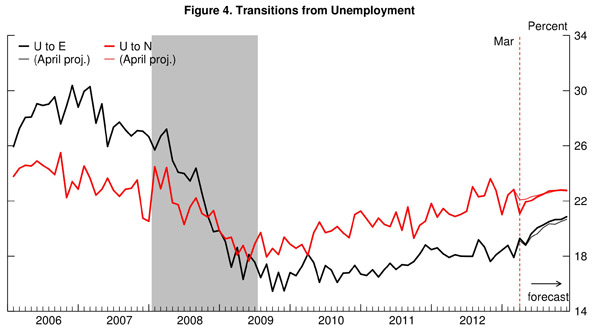The unemployment numbers for April were in line with last month’s forecast: Improvements in the labor market are accelerating and hiring is expected to increase at a solid pace over the next 6 months, bringing the unemployment rate down to 6.8% by December 2013.
This post discusses my monthly update of the Barnichon-Nekarda model. For an introduction to the basic concepts used in this post, read my introductory post (Full details are available here.)

In April, the unemployment rate dropped to 7.51% (rounded to 7.5%), very close to the model’s forecast (7.55%, rounded to 7.6%, see Table 1), and the contour of the forecast is unchanged compared to last month: the motel anticipates a solid rebound in the labor market driven by strong improvements on the hiring front: the jobless rate is now projected to reach 6.8 % by December 2013 (Figure 1).
The intuition for this forecast is easily understood by looking at the projected behavior of the “steady-state” unemployment rate. The steady-state unemployment rate, the rate of unemployment implied by the underlying labor force flows—the blue line in figure 5— stands currently at 7%. Our research shows that the actual unemployment rate converges toward this steady state. With a steady-state unemployment rate significantly lower level than the actual rate (7 versus 7.5, a 0.5 percentage point difference), this “steady-state convergence dynamic” is strongly pushing the unemployment rate down, implying a fast decline in unemployment going forward.

Going forward, the model anticipates the decline in steady-state unemployment to continue at a strong and steady pace, with a steady-state unemployment rate at 6.4% in December (Figure 3). The steady-state convergence dynamic will thus continue to push the unemployment rate down at a steady pace until the end of the year.
To forecast the behavior of steady-state unemployment (and hence of the actual unemployment rate), the model propagates forward its best estimate for how the flows between employment, unemployment and out-of-the labor force will evolve over time. With continued improvements on the hiring and job separation fronts over the past months, the model now anticipates a strong increase in workers’ job finding rate over the next several months (UE, figure 3) and thus a fast decline in the steady-state unemployment rate.



To read more about the underlying model and the evidence that it outperforms other unemployment rate forecasts, see Barnichon and Nekarda (2012).


Commentary
Unemployment Rate Projected to Drop to 7.4 percent in May
June 5, 2013